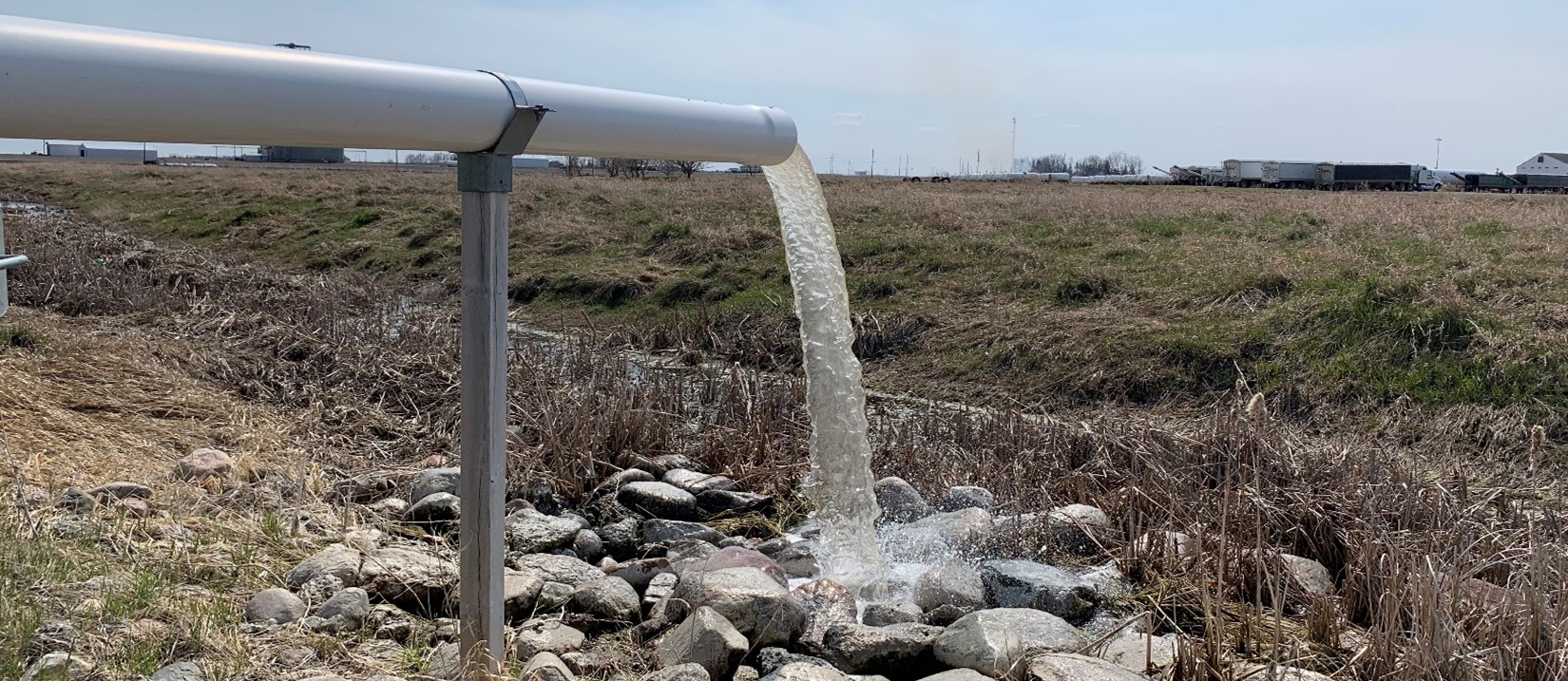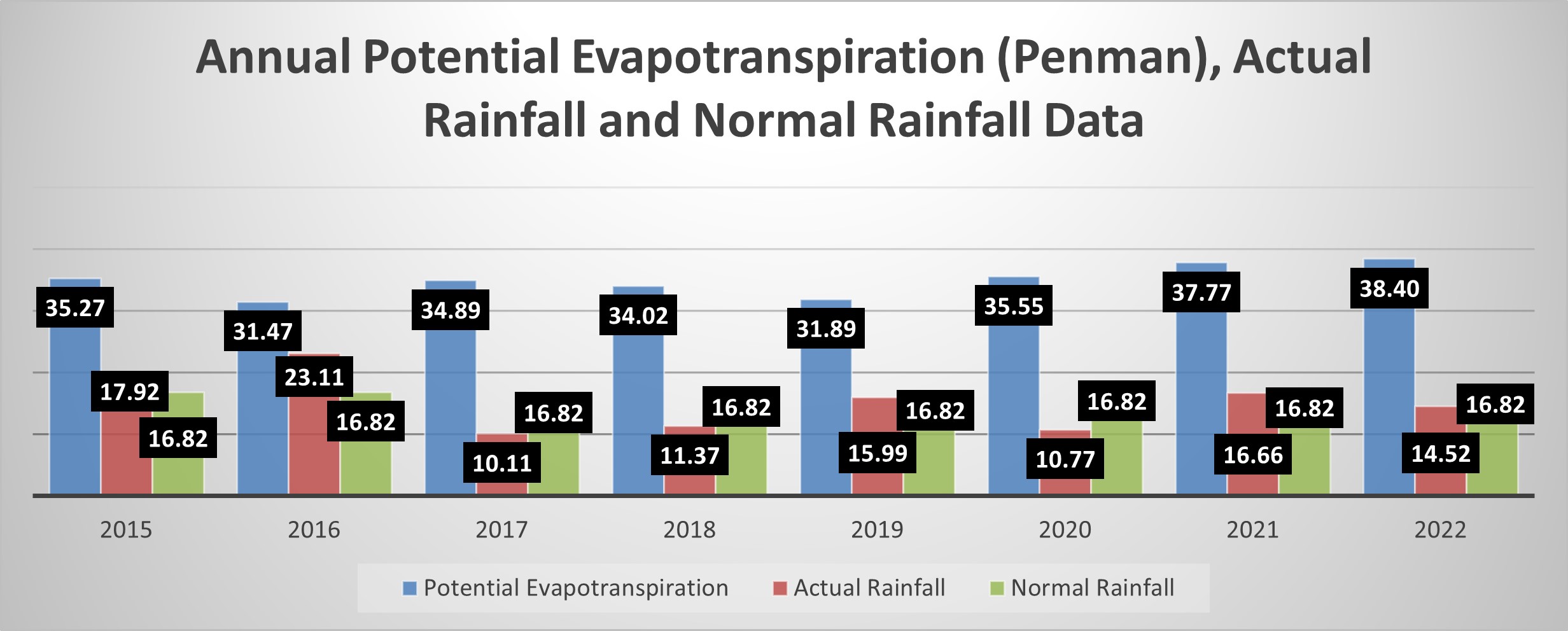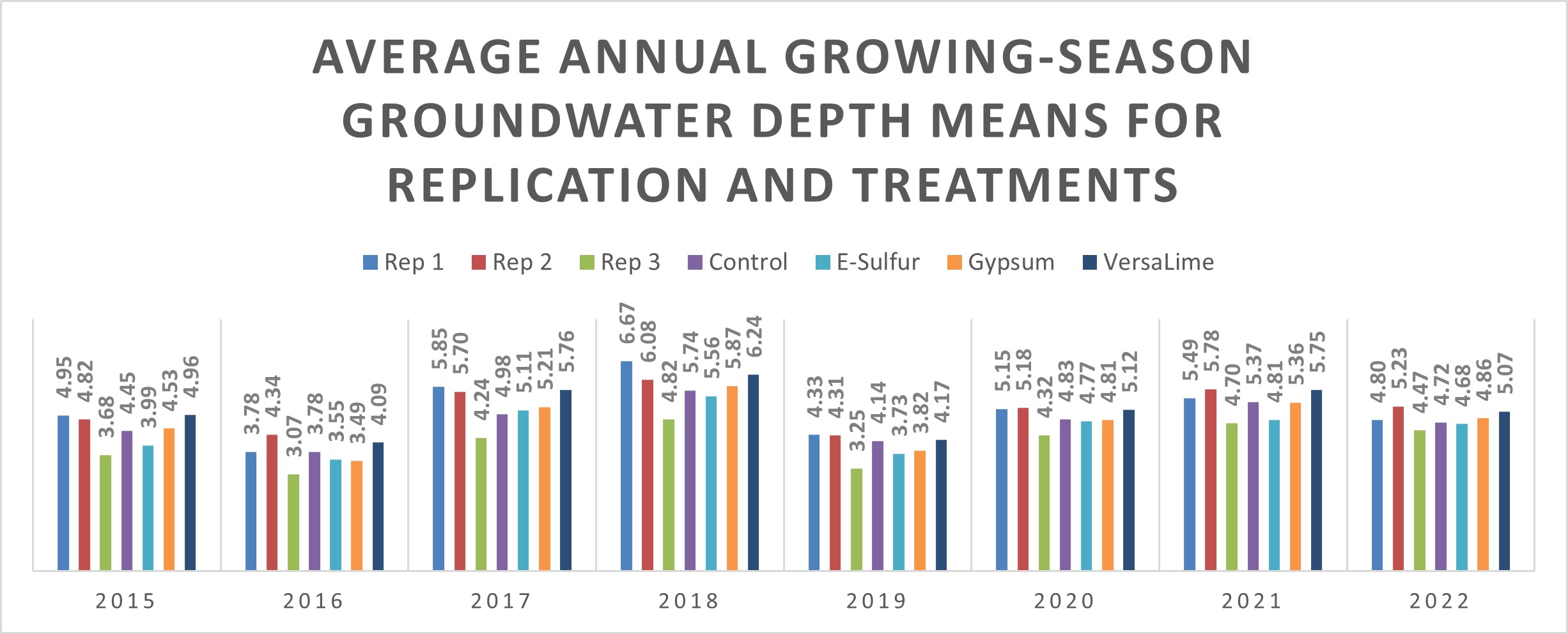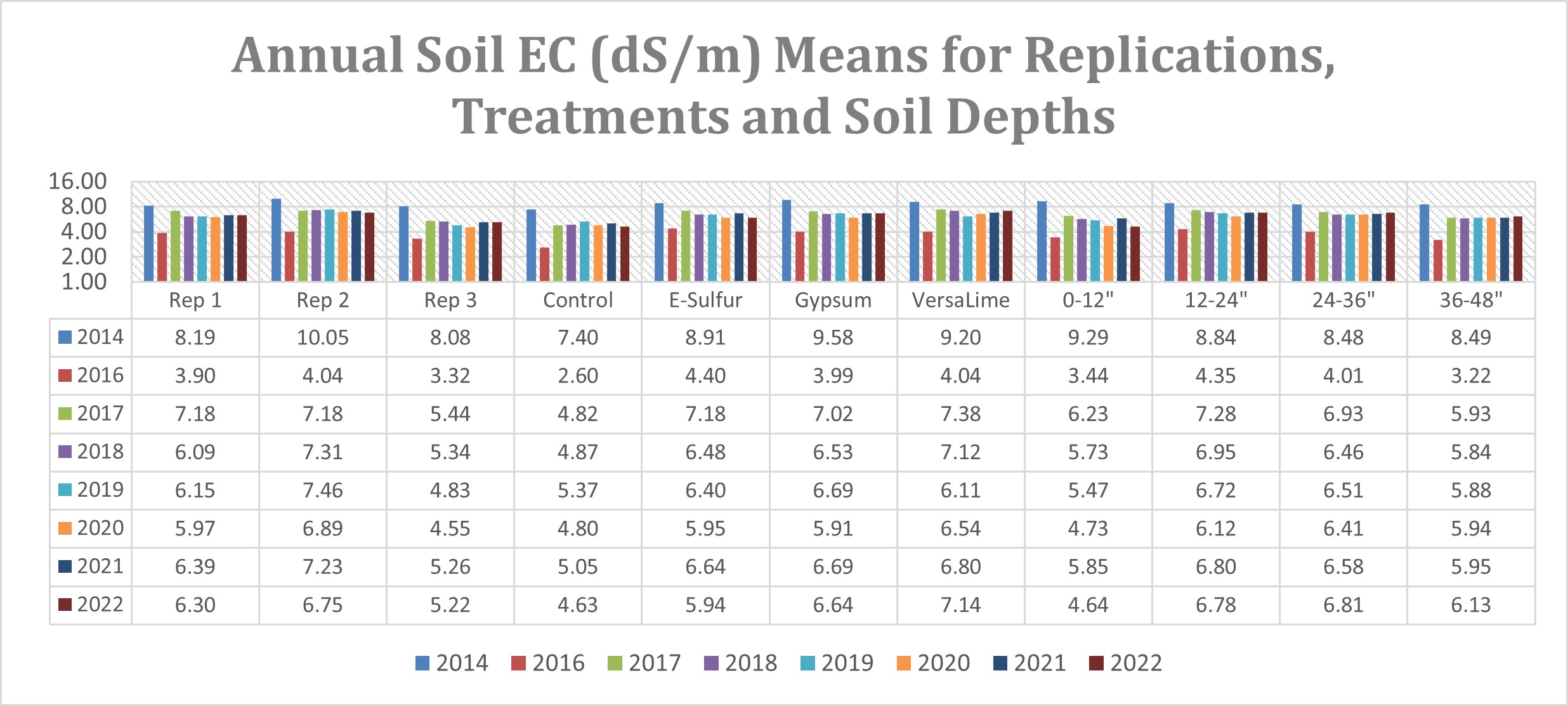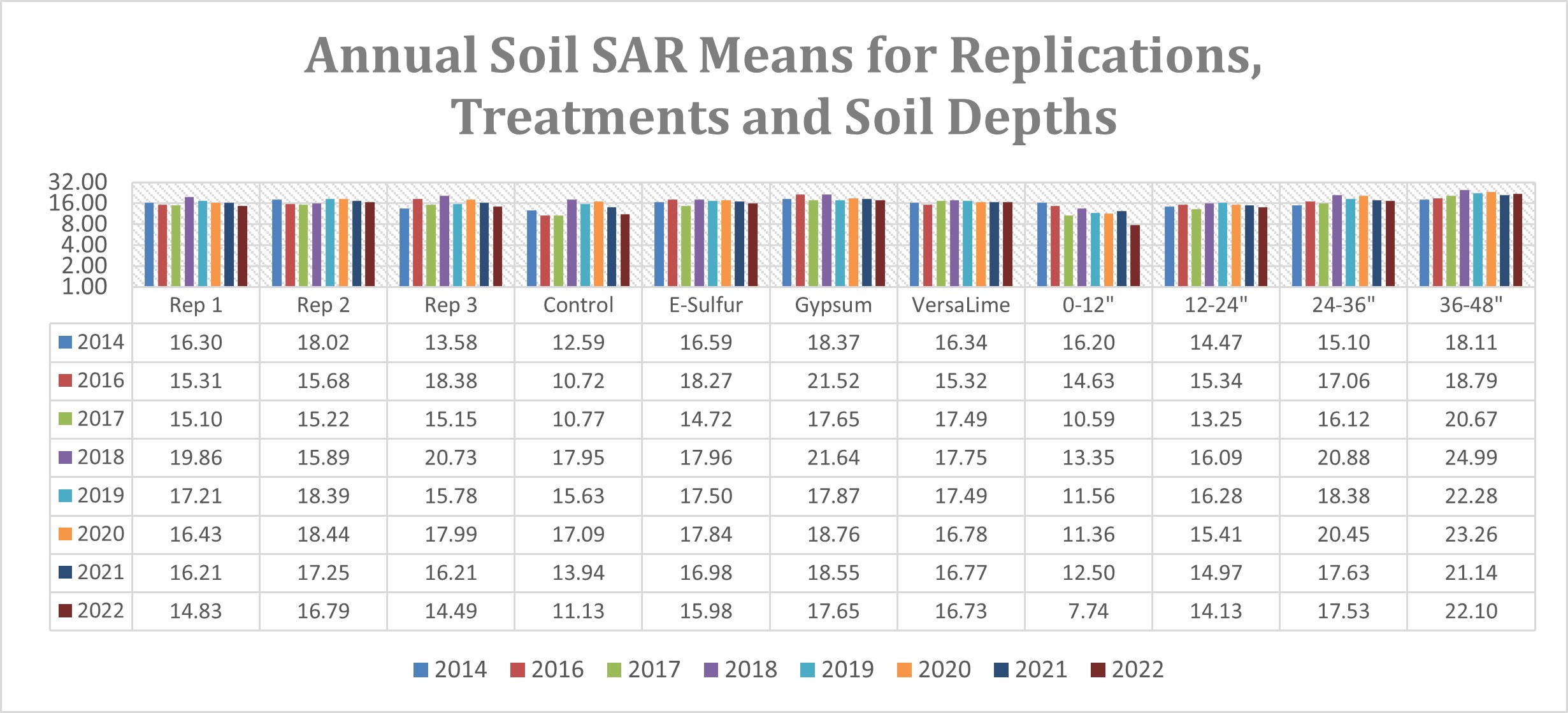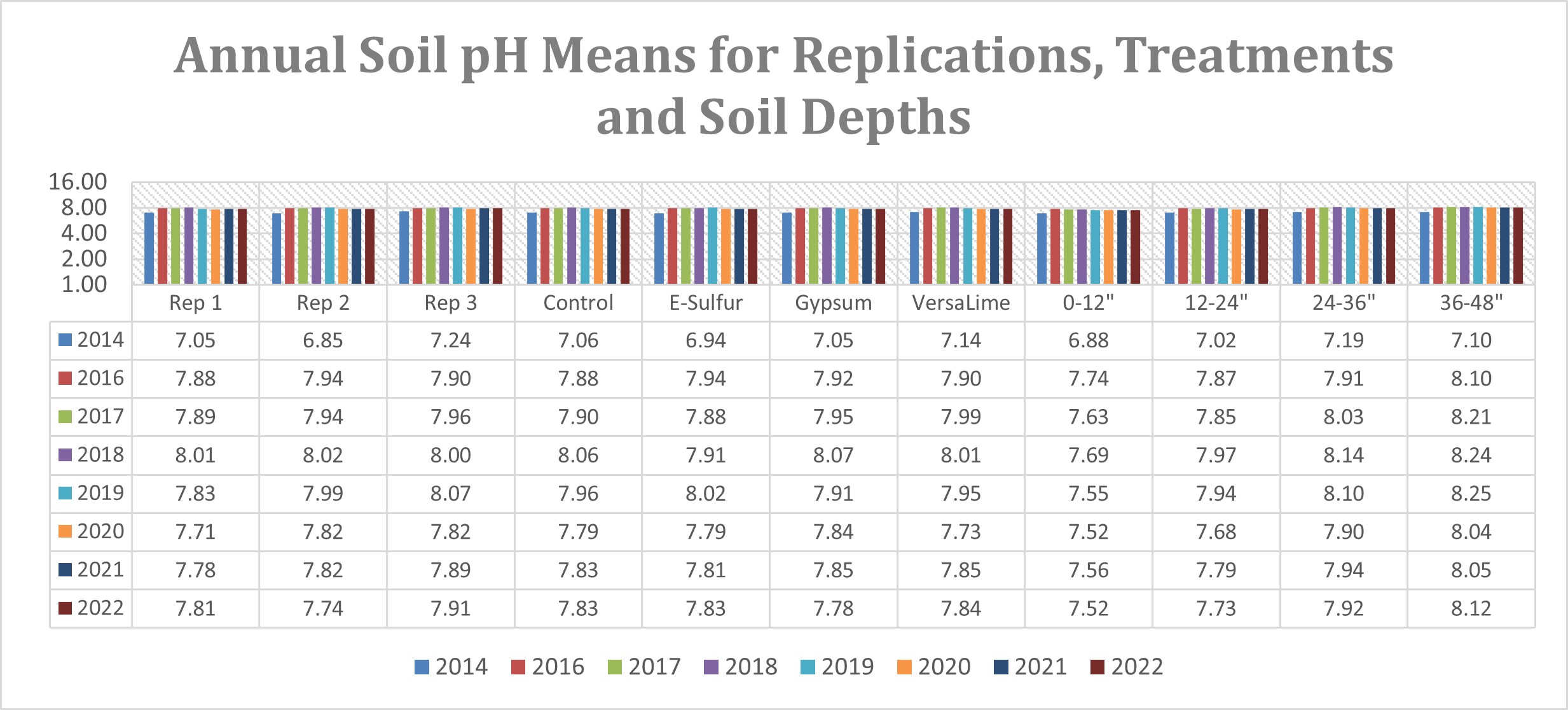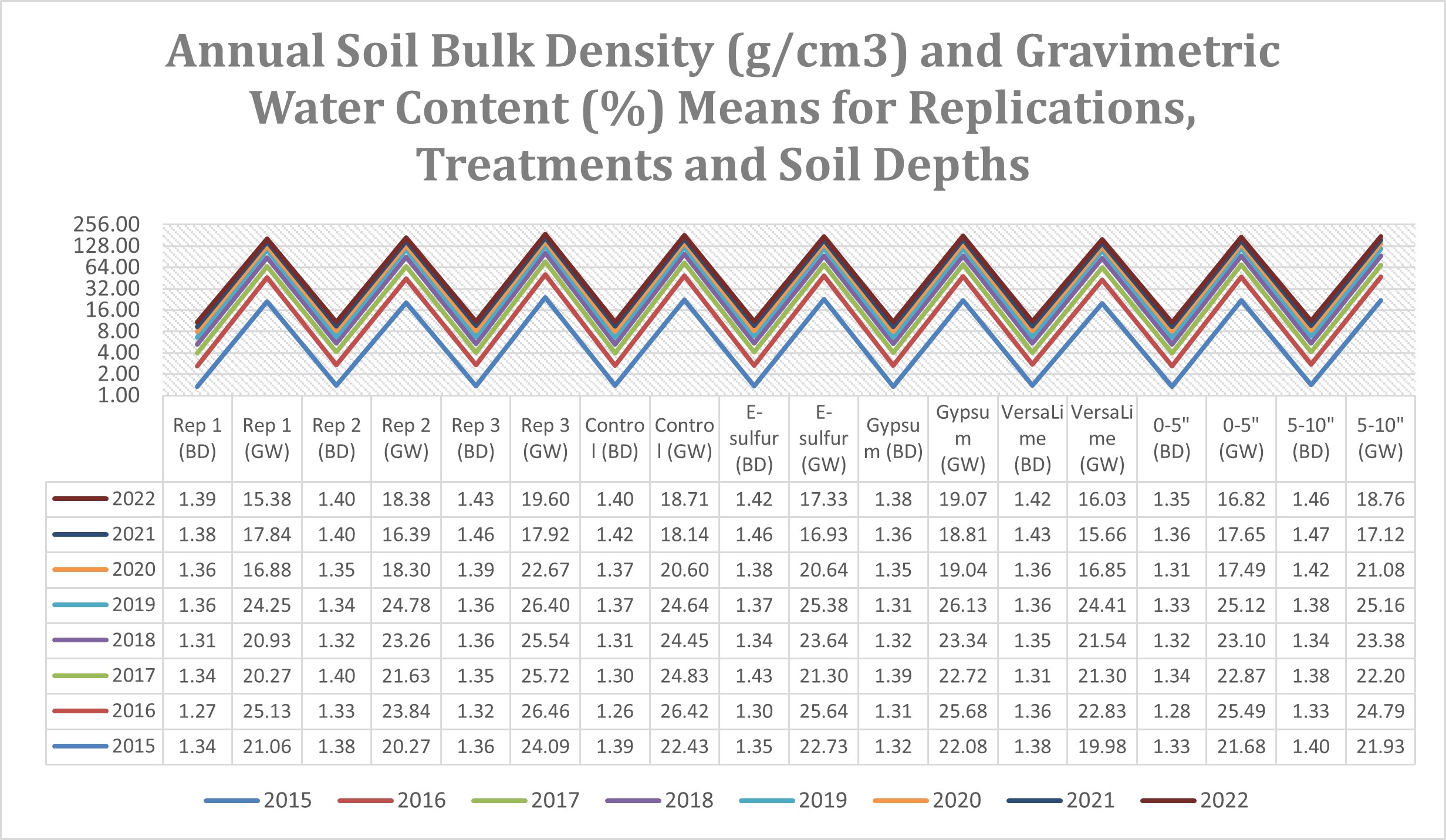Research data and observations are not conclusive at this point. Since most soils in North Dakota are clayey, the general belief is that these soils will infiltrate water slower and nothing can be done about it. That is true if we only compare the texture of clayey soils with silty or sandy soils. However, a clayey soil with high to very high dispersion or swelling will infiltrate water much slower than the same clay type not having these issues. Reducing soil dispersion and/or swelling combined with no or minimum-till practices and practices that help increase organic matter will improve soil particle aggregation, structure, pore space and water infiltration.
Based on the observations eight years after tiling and seven years after applying the soil amendments, below are answers for the three main objectives of this long-term research trial:
Does soil sodicity negatively affect tile drainage performance?
Yes, soil sodicity has negatively affected the performance of tile drainage at this site and despite heavy rains and standing water at the soil surface, sometimes it takes days for the lift station pump to start draining excess water. It eventually happens, but it takes time. Another evidence of slower water infiltration is roughly no change in groundwater depths for three to five days even after a heavy rain. Two specific examples are:
- Despite receiving 3.68 inches on August 9, 2021, it took the lift station pump four to seven days to start pumping the excess water into the drainage ditch.
- In 2019, the Langdon NDAWN recorded 1.52 inches from September 9 to 13 and there was visible standing water at the soil surface in low areas, however, the lift station pump was not running. It took the lift station pump three to four days to start running and drain the excess soil water.
Will tiling lower soil salinity under wet and dry weather conditions?
Tiling has lowered soil salinity (EC) levels under wet weather in 2016. With drier weather, salinity levels have actually increased in 2017-2022 despite land being tiled. That is due to the lack of rain water to force excess water-soluble salts into deeper depths and increased rise of capillary water due to increased evapotranspiration.
Does the drained water from a tiled field increase salinity and sodicity levels of the surface water resources?
Based on the 2015-2021 water quality analysis results, tile-drained water has added conductivity, total dissolved solids and SAR to the drainage ditch or the surface water resource. Over time depending upon the site-specific soil chemistry, tile drainage water can add salts and sodicity to the surface water resources.
